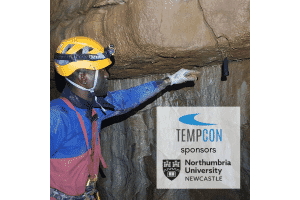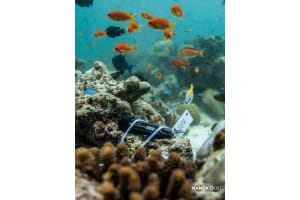
-
Posted: December 06, 2012Categories: Case StudiesRead more »
Air pollution from biomass fuels in Africa is a significant cause of mortality and morbidity both in adults and children. This paper by D G Fullerton, S Semple, F Kalambo, A Suseno, R Malamba, G Henderson, J G Ayres and S B Gordon describes the nature and quantity of smoke exposure from biomass fuel in Malawian homes.
Summary
Over 2 billion people rely on biomass fuel as their main source of domestic energy. Most of these people live in developing countries such as Malawi, where more than 90% of people cook using biomass fuel (fig 1). Indoor air pollution associated with biomass fuel use is increasingly recognised as a major health concern in the developing world, responsible for an estimated 36% of mortality from respiratory disease as well as contributing to non-respiratory pathology.1 2 3 4 5 Pneumonia is the leading cause of death in children <5 years of age and the risk of pneumonia in young children is increased by exposure to unprocessed solid fuels -
Posted: December 06, 2012Categories: Case StudiesRead more »
Yayoi Kaneko - researcher at Tokyo University of Agriculture and Technology, conducted a study on the Sett microclimate. In this study, the internal conditions of setts within five European badger (Meles meles) social groups are monitored during the cub-rearing season. Sett temperature showed substantial and significant variation over this period, while relative humidity remained stable throughout.
Abstract
Maintaining homeothermy is essential for mammals, but has considerable energetic costs. In this study, Sett microclimate within five European badger (Meles meles) social groups during the cub-rearing season were monitored, that is, February to July, in 2004. Sett temperature showed substantial and significant variation over this period, while relative humidity remained stable throughout.The Sett microclimate was least stable during the period for which cubs remain entirely below ground between February and April; however here the instrumented main
-
Posted: December 05, 2012Categories: Case StudiesRead more »
For this research - carried out by Lomas KJ and Kane T from the School of Civil and Building Engineering, Loughborough University - Hobo Data loggers supplied and calibrated by Tempcon Instrumentation were used to examine internal summertime temperatures in the living and bedrooms of 282 homes in the UK city of Leicester.
This being a statistically representative sample of the city's housing stock. The monitoring period, whilst generally cool, included a short period of hot weather.
Abstract
Internal summertime temperatures measured in 268 homes in the UK city of Leicester are reported. The hourly data was collected from living rooms and bedrooms during the summer of 2009, which was generally cool but with a short hot spell. Some household interviews were conducted. The -
Posted: June 18, 2012Categories: Case StudiesRead more »
In this article you can find an innovative use of the Hobo Pendant G Logger from Onset. Here the loggers were used to determine the optimum incline for eel passes to be positioned and also to determine whether they would be feasible in the first place.
The G Logger provides an easy way to obtain inclination data in almost any discipline you can imagine. Measure 3-dimensional motion, such as sports activity or medical therapy compliance with the HOBO® Pendant G loggers. With this logger, users can measure acceleration and angular displacement in 1, 2 or 3 axes. Use this data to monitor activity and improve performance.
Click here for more information about the Onset HOBO G Logger.
ABOUT ONSET
-
Posted: March 28, 2012Categories: Case StudiesRead more »
Back in January we told you about Jennifer Loxton's trip to the Antarctic to study environmental conditions beneath the waves using HOBO U24-002 Data Loggers. Now she is back, and published some fantastic underwater pictures!
"You may think that not much can survive in the challenging conditions of the Antarctic, but here I would like to share with you some pictures from my recent diving experiences on the West Antarctic Peninsula and introduce you to some of the creatures that live there so join me in a virtual dive in Antarctic chilly waters..."
Be sure to check out some of the fantastic photos on her Twitter page.
About Jennifer Loxton's research
With such harsh conditions, have you ever wondered how marine creatures have evolved to survive at the bottom of this ocean? Have you ever considered whether things were the same in the times of great polar adventurers, like Scott, Shackleton and Amundsen -
Posted: March 28, 2012Categories: Case StudiesRead more »
Thankfully, we don’t have to brave the extreme conditions that Jennifer Loxton, of Heriot-Watt University, will be facing in Antarctica. She is awarded funding for a project investigating the effects of climate change there, and will be making use of the HOBO U24-002 Conductivity/Salinity Data Loggers supplied by us.
Jennifer has been awarded funding from British Antarctic Survey, NERC and the Heriot Watt Alumni Fund to support a project investigating the effects of climate change in Antarctica. The project is collaboration between scientists from Heriot-Watt University, the Natural History Museum (NHM), and the British Antarctic Survey (BAS).
Jennifer will join scientists from the British Antarctic Survey (BAS) on an expedition to the Antarctic Peninsula, to spend 6 weeks in Jan/Feb 2012 SCUBA diving in one of the most




